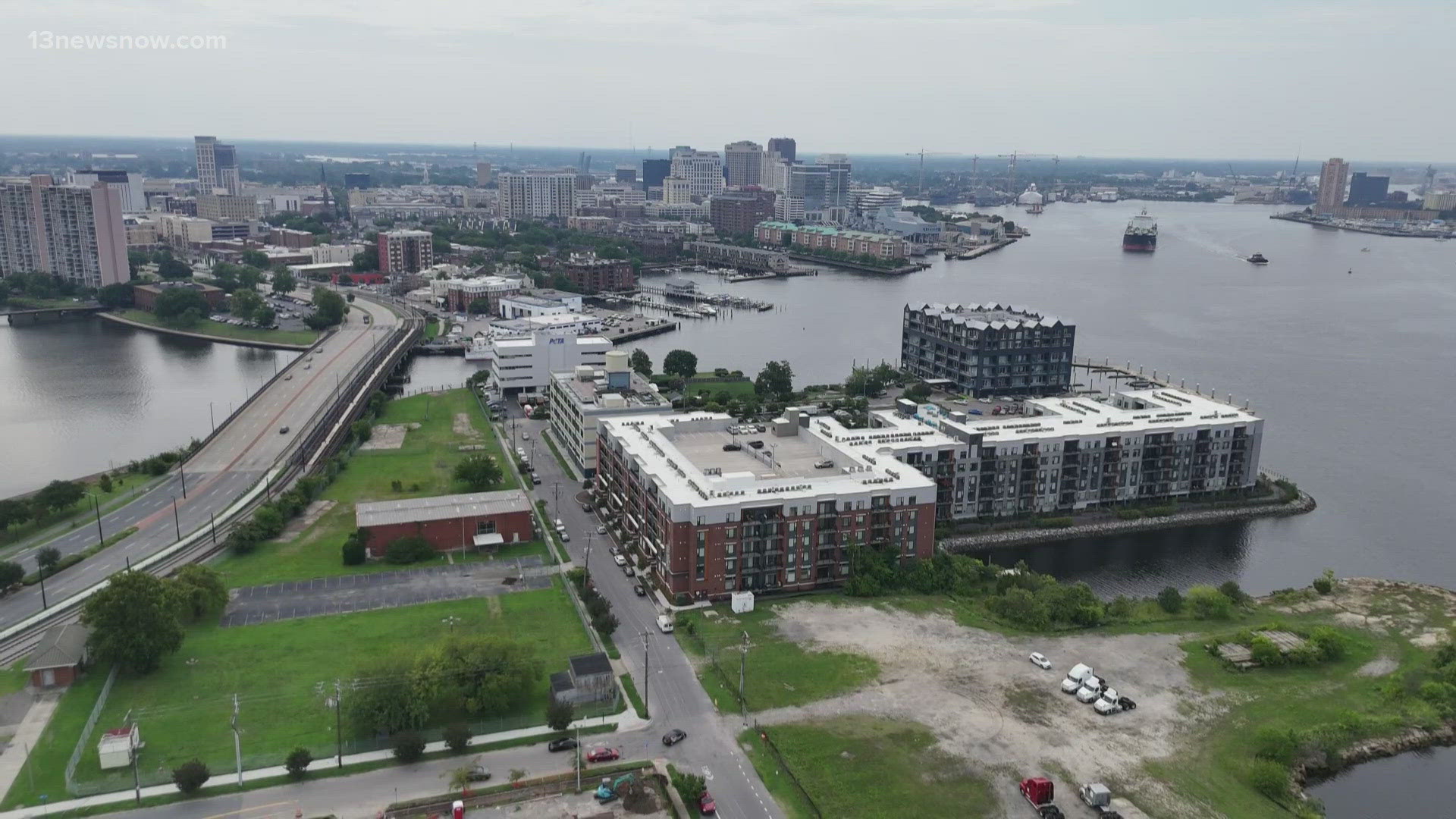NORFOLK, Va. — As we all know, Hampton Roads has a mixture of cities, rural towns, and farmland, but where you live can affect how hot the day gets.
This has to do with albedo, or the measurement of how much sunlight an object can reflect.
In the city, the combination of asphalt roads and metal buildings easily absorbs incoming sunlight. Since roads and buildings are usually made of dark materials, they have a low albedo.
That means that sunlight gets trapped in the area, which causes temperatures in the cities to rise higher than surrounding places. In the meteorology world, we call this the "Urban Heat Island Effect."
In comparison, rural areas are usually filled with more vegetation. Trees and plants reflect sunlight better than concrete and metal, in turn making the area stay relatively cooler.
Things like plants have a high albedo, meaning that they reflect sunlight more easily.
Additionally, when places have a lot of plants, the soil has more moisture. That means more evaporation can occur, which cools the air right near the ground.
According to the Environmental Protection Agency (EPA), urban areas can be as much as seven degrees warmer during the day than rural places.
Due to the Urban Heat Island Effect, living in a city with lots of concrete and metal can cost more than living outside of that city. City residents can end up spending more on their energy bills when trying to cool their homes.
To mitigate the impacts of the Urban Heat Island Effect, the EPA suggests planting trees or vegetation in urban areas.
That's how your weather works!

